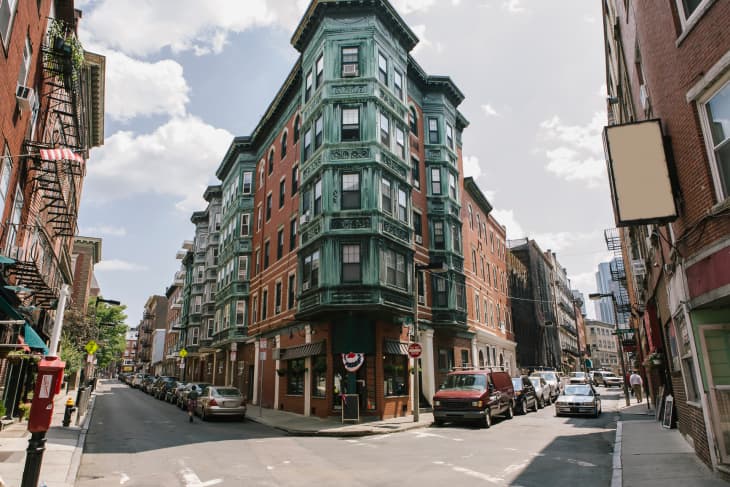Here’s Why Life Is So Good in “15-Minute Cities”

Picture this: You walk out your front door, hop on your bike, and ride to a doctor’s appointment. On your ride home, you drop by the grocery store to pick up a few veggies for dinner. Later, you walk to the park for a little sunset stroll.
This fantasy could be your reality if you move to a “15-minute city.”
What is a 15-minute city, anyway? As the name suggests, it’s a neighborhood or urban development in which everything residents need to thrive is within a quick 15-minute walk or bike ride from home. That includes shopping, healthcare, leisure, work, school, services — you name it.
The concept is not new — a business professor and scientist named Carlos Moreno popularized the idea back in 2010 — but it has been in the news a lot lately. And not for the reason you might guess: Conspiracy theorists latched onto the idea and falsely equated 15-minute cities to prison camps, in which governments would monitor and restrict citizens’ movements.
Recent controversies aside, the concept likely has staying power. City leaders around the globe included 15-minute cities on their list of steps communities can take to recover from the COVID-19 pandemic in a way that promotes health, sustainability, inclusivity, and economic resilience. Here’s what you need to know if you’re planning a move and want to consider a 15-minute city.
The Pros and Cons of 15-Minute Cities
Proponents say 15-minute cities have numerous benefits. Because they’re designed for walking and biking, they should help reduce our reliance on fuel-guzzling, greenhouse-gas-emitting vehicles amid human-caused climate change.
“The concept of a 15-minute city is very much on brand with the current interest in reducing our carbon footprint and mitigating the negative human impact on the planet,” says real estate broker Julia Hoagland. “When people are within a short distance of work, shopping, play, and entertainment, they don’t need to drive a car as often and might not even need a car at all.”
A prominent example of a 15-minute city in the U.S. is Portland, Oregon. Living in a 15-minute city can also help residents stay active and spend more time outdoors, which has been linked with mental health benefits. And because people are out and about (instead of alone in their cars) they’re more likely to socialize and foster connections, says real estate broker Louise Phillips Forbes. “When everything is condensed in a mini-community, people flourish through relationships that might not happen otherwise,” she says.
With key destinations so close together, residents can spend less of their time and energy on commuting and focus more on leisure activities, says real estate broker Stephane Guerrier. Buying a house in a 15-minute city can also be a savvy financial move, she adds.
“The convenience and accessibility of essential services make your neighborhood more attractive to potential buyers or renters,” she says. “When people see they can have everything they need close by, they’re willing to pay more for a home in that area.”
The flip side of this, of course, is that you’ll likely pay higher prices when you’re hunting for a house to buy. A home in a 15-minute city may simply be out of your price range.
“The closer you are to the action, the higher the prices are — that’s the typical give-and-take scenario,” says real estate agent Ivan Chorney. “If you want it all, you better be prepared to give more from your wallet.”
Depending on the type of development, you may also have to settle for a smaller home and property, and that just won’t work for everyone. “If having a big home and a big yard are the most important things to a buyer, then they’ll likely need to be farther away from the action,” Chorney says.
But if location — and, more specifically, proximity — is at the top of your real estate wish list, then buying in a 15-minute city could help you really hone in on what’s important to you in a home. This is true in New York City, which is sort of like a 15-minute city on steroids. There, residents treat public spaces, like parks and playgrounds, and shared spaces, like restaurants and gyms, as extensions of their living space, says real estate agent Kate Wollman-Mahan.
“Most New Yorkers do not have the luxury of thinking of their home as a place that can meet all of their desires, but they learn to prioritize what they really need at home,” she says.
How to Find a 15-Minute City
You don’t need to move to a neighborhood that’s specifically labeled as a 15-minute city to enjoy many of the same benefits. Lots of communities still have historic Main Streets, with adjacent neighborhoods that put residents in close proximity to restaurants, shops, bars, and more. Others are creating new developments with this concept in mind — instead of subdivisions with row upon row of cookie-cutter houses, developers are starting to build mixed-use neighborhoods with both housing and commercial spaces.
An experienced, local real estate agent can give you the rundown on neighborhoods — and which ones might best fit your needs.